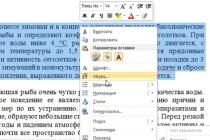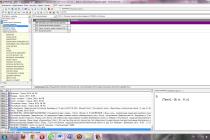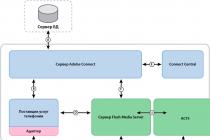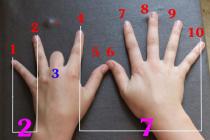Consideration of the error "the selected disk contains an MBR partition table", identifying solutions, and a description of the solution to the problem related to disabling the Secure Boot property. The selected disk contains the MBR partition table, which means that Windows is installed on this PC.
This problem occurs when, when updating operating system from Windows 7, XP, Vista to a later version using a mass storage device, HDD remains in the old conversion - MBR.
And Windows 10 and 8 support the orientation of the GPT hard drive, because they are the EFI (Extensible Firmware Interface) system, or UEFI, which replaced the BIOS as a more advanced base operating system.
Of course, in opposition to this innovation, arguments are put forward regarding the impossibility of working with devices that support BIOS configuration, older computer models that are still in use, etc.
However, it is easy to get out of the situation when the old MBR disk format stands in the way of installing the desired Windows numbers... That is, the ways to solve the problem:
- conversion hard disk in GPT (then the MBR is fully formatted);
- changing the base operating system to BIOS (then EFI, or UEFI, ceases to exist, and related innovations).
Nevertheless, despite some resistance towards the new base OS (and, accordingly, the GPT-format of the disk), converting disks or even selling them with the original GPT is gaining momentum.
How to fix the error
Read also: TOP-6 Ways to completely clean the hard drive "C" unnecessary files on Windows 7/10
If there is an mbr partition table on the disk, you can convert it to GPT, after which the information will be completely erased from it, despite the fact that the hard drive consists of several parts.
To do this, you only need the program that installs Windows.
Sometimes the option of making changes to the base OS is used, that is, changing it to BIOS. But this path will require additional: third-party free program, recording on the storage device of this program.
How to Convert Hard Drive to GPT
Read also:
To open a line for entering commands, you must use the simultaneous pressing of Shift and F10 (this manipulation is suitable only for OS 10 and 8 on a PC). On a laptop, an additional Fn button to the above combination may work.
It is important to type the command, and after it press enter:
- diskpart;
- list disk (when these two words are entered, it is better to mark the number of the disk that you are going to install; denoted here H);
- select disk H;
- clean;
- convert gpt.

Upon completion of the process, you must open the line again for entering commands and select update in the window where the sections are selected.
Then an empty space is selected, the installation continues. By the way, you can use the creation point before that in order to divide the disk into parts.
Tip: if suddenly the disk is not in the list, you can reboot personal computer from a flash drive (which is bootable) from the OS and complete the installation.
How to convert a disk to GPT while preserving information
Read also: Create your own bootable USB flash drive with utilities for Windows (7/8/10)
If there is an mbr partition table on the selected partition, you need to convert the disk, and data loss is undesirable, there is a way out.
After that (it is assumed, we load the base operating system EFI), you can overwrite what is in the image to the flash drive.
But before that, you need to format it in FAT32 so that it is bootable. Moreover, in the BIOS, the Secure Boot parameter must be deactivated.
After completing the boot process from the storage device, you need to start the program by selecting the appropriate button. When the launch occurs:
1 Select a disk doomed to be converted. Please note that this is nothing else, just a disk.
2 In the column to the left, select the position that meets the goal. conversions

3 Then you need to select Apply, agree with the warning in the window that appears. Then it only remains to wait for a time proportional to the size of the disk. That is, in the case of its small size, the duration will not drag on. But when his memory is very full, there are many small components or, conversely, several very large ones, you will have to be patient.
It happens that during the selection of a converted disk, the computer starts to protest. That is, it gives an error and gives arguments that the system disk and the user's idea will not work.
Then you can proceed as follows:
1 Find the Windows boot loader in the initial stages of the disk, select it (as a rule, it takes up to five hundred megabytes).
2 Find the top line in the menu and click Delete. Then apply the process by clicking Apply. It is recommended to use the free space for the bootloader, which will be located in FAT32 (file system).

After the above manipulations, you can close the program and install Windows according to the conceived scheme.
Changing the base operating system as a solution to the problem with MBR partitions
Read also: How to Save Passwords When Reinstalling a System: 2019 Methods
As described earlier, there are two options for resolving the MBR error.
The first was to change the format of the hard drive, that is, this MBR should be changed to GPT, which fully meets the requirements of the base EFI OS, with which the new ones work. Windows systems.
But the option is also available to change not the disk format, but the base OS, that is, from EFI to BIOS.
Many experts believe that this idea does not meet the current realities, where it is difficult to pull it out on a rather primitive OS (compared to the new version).
They think computers are being filled with more and more information, programs, and so on. And with the BIOS policy, the PC will not perform its functions, which will ultimately lead to great inconvenience in operation.
But perhaps such a scheme will suit someone more, if only because the PC itself is from older models, and it would be difficult for him to pull such innovations.
When booting a PC with the participation of the flash drive that is the installation one, it is important to apply Boot Menu... It should be borne in mind that you need exactly the button that leads to the use of a storage device without a UEFI (EFI) icon. This will start the computer in Legacy order.
By the way, in the settings of the storage device with BIOS, you can also configure parameters with EFI or without using UEFI in the same way.
Moreover, the EFI parameters allow you to deactivate the boot function using UEFI, and then install the Legacy or Compatibility Support Mode.
This option is also suitable when using a storage device that is inserted into the drive.
It should be noted that, at times, this option can fail, an error, but in order to fix this, it is enough to change the parameters in the BIOS to deactivate Secure Boot, sometimes it is worth checking the OS setting, it should not be Windows.
Guide to Disabling Secure Boot
Read also: Windows Installer package error: causes and remedies in 2019
It is not a parameter that belongs to any Windows versions rather, it is a property of the operating system. It controls the absence extraneous programs and systems when the computer starts up.
That is, in general, this is a necessary detail, but sometimes it gets in the way. And the case of the impossibility of installing another OS may be precisely because of the Secure Boot property. What you need to know to deactivate it:
In order to configure the operating system correctly, you need to go to the appropriate window.
So, in Windows 8, you can simply go to change the parameters through the left panel and in additional parameters find PC settings (UEFI).
There is an individual path to these properties for each Windows OS number.
There are also more universal way: During the process, when the PC is turned on, use the delete and F2 keys at the same time. It should be borne in mind that Notebook can react to a combination of Fn and F2.
Disconnecting Asus Hardware from Secure Boot
Read also: How to change the type of Windows network: Instructions for all versions (7/8/10)
To disable laptops or motherboards with this name, you need to go to the EFI options, where the boot tab will lead to secure boot, and there it is already necessary in the "type OS" to choose the "other OS" (other OS). F10 will help to fix the settings.

It should be noted that in certain cases with Asus, you should find a security or tab bot, there you already need to configure Security Boot.
Before you start installing Windows 10 on new computer on which stands motherboard supporting a modern API called UEFI, you need to understand the basic concepts to get an idea of what you have to deal with.
Having bought a new computer / laptop that supports UEFI, it is strongly recommended that you immediately convert the table of its hard drive to GPT due to the many advantages that we will consider below, and only then install Windows 10 on it and copy any data.
What do all these acronyms mean?
The outdated API, which ensured the interaction of the operating system with the hardware and transferred the first reins of control after the initialization of the equipment, was replaced by the UEFI interface. UEFI features that are important for Windows user 10 are:
- support for the GPT partition scheme - we'll talk about it further;
- availability of services, one of which is required for Windows boot 10, and the second is used in Linux to store dumps, where information about problems that occurred during the last shutdown of the PC is recorded;
- modular architecture - here you can install your own (downloaded from the Internet) drivers in UEFI. They are needed, for example, to gain access to file system on a computer without an installed operating system;
- Supports a hardware-encrypted hard drive or logical drive;
- UEFI is characterized by increased performance compared to BIOS;
- works only in 32-bit and 64-bit mode, does not support operation in 16-bit mode;
- integrated download manager - can add your own boot menu items.
GPT is a new standard for arranging file tables on physical media, which came as a replacement for MBR. Unlike its predecessor, released to the masses back in 1983, GPT supports any hard disk that exceeds 2 TB (when using MBR, there is simply not enough address space to address all sectors), can work with more than 4 active volumes and 128 partitions on one physical medium. Also, GPT stores multiple copies of the boot data in various places on the partition, which is why, using this file storage standard, you will recover damaged boot sectors much faster.
Preparing the drive
Installing an operating system on a hard drive always starts with proper preparation. In our case, this is downloading a suitable image and deploying it to a USB flash drive. Let's consider a process with the calculation that ISO is on the computer, and the Rufus application latest version already launched.
We will use Rufus due to its ease of use and the absence of unnecessary menu options.
- We select a flash drive that will act as a carrier for the Windows 10 distribution.
- In the second drop-down menu, be sure to select GPT for PCs with UEFI.
- It is better not to change the file system and the size of the cluster - these parameters have no meaning for the installation of the operating system.
- We activate the quick formatting option so as not to wait ten minutes.
- Check the box next to "Create boot disk"And click on the drive icon.
- Choosing an image with Windows distribution 10 and press "Start".
Converting partitions using OS tools
Windows 10 allows you to convert an MBR partition to GPT using the standard Disk Management tool.
- You can call it by executing the command "diskmgmt.msc" or the context menu "Start".

- Select each hard drive and delete it using the context menu.

- We call the command "Convert to GPT disk" through the context menu of the hard drive.
Note that it will become active after all volumes have been deleted, and if the running Windows is not on the media whose table you want to convert.

Conversion will take a dozen or two seconds if the disk has no bad sectors. After that, the partitioning of the disk becomes available and installing Windows 10 to its active section.
Installation problems
If the installation of "tens" on the hard disk has stopped with an error stating that the installation of Windows 10 in the UEFI system on MBR partitions is not possible, you need to convert GPT to MBR to continue. The problem is faced by most users who did not complete the conversion before starting the OS installation.

This is done using a set of commands executed.
- To convert a disc, you need to restart your computer, and in the installation program, when the "Install" button appears, click "System Restore".

Keep in mind that following the instructions in the next step will clear your hard drive of all information and convert its partition tables to the new GPT standard, with no way to recover anything stored on the hard drive prior to conversion.
- After opening the command timeline, we sequentially enter the following chain of system commands into it:
- diskpart - launch a utility for working with partitions;
- list disk - visualization of a list of volumes in order to select a future one system disk for conversion;
- select disk X - select the desired volume;
- clean - clears the active partition numbered X;
- convert mbr - convert mbr-section;
- create partition primary size xxxxxxx - create a new partition with a specified size in bytes;
When entering the size of the volume, keep in mind that 1 GB = 1024 megabytes, so to get a 50 GB disk, its size must be multiplied twice by 1024.

- active - make it active;
- format fs = ntfs quick - execute quick format in ntfs;
- assign - the disc will be labeled with the first free letter of the English alphabet, starting with "d";
- exit - exit from command line Windows 10.

- Click "Refresh" to get the latest information about the disk and its partitions again.

If the installation of Windows 10 on the GPT partition fails and a familiar window appears, several additional conditions must be met:
- a 64-bit system must be installed;
- the computer must be turned on in U mode
Most likely, the setting of "ten" is impossible due to the second factor.

- To solve it, you need to go to UEFI, which is carried out mainly with the F2 (for laptop) or Del (for PC) keys.
- Find and activate (set the value as "Enable") the UEFI boot function.

Usually, it is located in the BIOS Features section or BIOS Setup.
- We switch the SATA mode of operation to AHCI instead of IDE mode. Most often, changing this option is not required, but you should check it just in case.

- We save the new settings.
In different versions of UEFI, the settings may be located in different sections and even have different names.
After that, installing Windows 10 on a partition with a new standard for placing file tables is carried out as a normal installation of "tens".
(Visited 57 607 times, 12 visits today)
Today there are two main types of markup hard drives for operating systems of the Windows family, this is. In previous articles, we talked about the benefits of both.
For laptops and computers later than 2016-2017 with the UEFI system, it is the GPT markup that is relevant. When you try to install Windows from under UEFI to a disk with MBR markup, you will see the error "In efi windows systems, you can install only on a gpt disk."
Message text
This means that the partitioning style of your hard disk is MBR type and for further installation you need to convert it to GPT.
How to convert hard drive from MBR to GPT right during Windows installation?
In previous articles, we told you during the Windows setup. Reverse conversion is carried out in a similar way, but in this case all data is deleted from the hard disk, the layout of which you will convert to GPT. So let's get started:
- In the window for selecting a local disk for installation, press the keyboard shortcut Shift + F10.

Launch Diskpart
- A command prompt window will appear. We write a command to run special utility on working with hard disk partitioning.

Viewing the list of disks installed on the PC
- Then we enter the command list disk , which will display all drives connected to the computer at the moment.

Choosing a drive to convert
- Now you need to select the disk for conversion, with the command select disk N. Here N is the disc number from the displayed list above. It is easy to determine the size you need. Also, this list may display your flash drive from which you are going to install windows. But we choose the hard drive. That is, in the select disk N command, instead of N, we put the number opposite the desired disk;
Disk cleanup
- With the next command, enter clean ... It will clean your hard drive completely. from all data. After its execution, instead of local disks, an unallocated area will be displayed, which you will later map to local disks anew.
Successful GPT conversion message
- Now the actual conversion command itself. Convert gpt ... It is she who converts MBR markup to GPT.

Exiting Diskpart
- After running the previous command, type twice exit to exit the utility.
After executing all the above commands and closing the command line, you will see something like this:

Unallocated area after converting from MBR to GPT
Here, using the buttons below, you need to re-partition the hard disk into partitions and you can start installing Windows. The error "On efi windows systems can only be installed on a gpt disk" will no longer appear.
The best way thank the author of the article - repost to your page
When installing a new Windows 10 operating system, users may encounter an installation refusal accompanied by a message that the selected disk has a GPT partition style.
How, then, to convert MBR disk to GPT and vice versa when installing Windows 10?
Which disk partition style should you choose for Windows 10?
If during the installation of Windows 10, the selected disk gives an error that concerns the correct choice of the style of the device partitions, you should first of all decide on the current version of the volumes for your PC. There are two ways to determine:
- If you have a new UEFI computer, when you enter BIOS settings you can control the mouse, not just the keyboard. The graphical interface is colored, not blue with white letters. In this case, you need to correctly install Windows 10 on a GPT disk.
- If you have an old computer and you have changed components for a long time, the BIOS has a standard blue interface, you will need to convert the GPT style to MBR, and only after that it will be possible to install Windows 10 on the hard drive.
Installing Windows 10 to a GPT UEFI Disk
Performing a Windows 10 installation to a GPT disk is a complex process. To implement it, you need to adhere to two recommendations, namely:
To fulfill the first condition, you need to make changes to the BIOS UEFI settings. To do this, restart the PC and continuously press "F2" or "Del" (there may be other keys, depending on the motherboard model). Next, we carry out the following recommendations:
- Go to the BIOS Features or BIOS Setup section. We expose the boot from UEFI, not from CSM.

- In SATA mode, instead of IDE, we specify the AHCI environment. Typically this setting is found under the Peripherals section.

- We save the changes and restart the computer.
After you have saved all the changes, the computer will be ready to install Windows 10 and format the partitions. By performing this process from disk, the chances of an error occurring are low. If you use a drive for this purpose, it is worth re-recording the image so that it supports the UEFI interface.
IMPORTANT! You can create a USB flash drive with an image in UEFI only for 64-bit versions of operating systems.
You can create such a USB flash drive using the command line with Administrator rights. To do this, we perform the following actions. We press "Win + R" and enter "cmd".

- diskpart
- list disk
- select disk

Select the USB flash drive to which the image of the dozen will be recorded. We prescribe the following commands in turn:
- select disk N
- clean
- create partition primary
- format fs = fat32 quick
- active
- assign
- list volume

After completing these steps, you need to mount the ISO-image in the system by clicking on the file and selecting the "Connect" item. Next, select the content virtual disk and send it to the USB stick.

Now we install Windows 10 from a USB flash drive or from a disk.
How to Convert GPT to MBR for Windows 10 Installation
If installing Windows 10 and formatting partitions fails due to GPT style mismatch, you need to convert the non-UEFI disk to MBR.
At the stage of selecting partitions when installing the operating system, you should perform the following steps:
- Press "Shift + F10". A command prompt will open. Enter "diskpart" and then "list disk" to display a list of connected drives.
- Next, enter select disk N, where N is the number of the disk that needs to be converted.
- To clean up the hard drive completely, enter "clean". If you want to delete only partitions, use the commands "detail disk", then "select volume" and "delete volume".
- To convert, enter "convert mbr".
- To finish, enter "exite".


If you converted partitions at the stage of configuring disks, you need to click the "Update" button. Further installation on the MBR will start as usual and the error will not repeat.
Before you start installing Windows 10 on a GPT disk (on a new computer with a motherboard that supports a modern API called UEFI), you need to understand the basic concepts to get an idea of what you have to deal with.
Having bought a new computer / laptop that supports UEFI, it is strongly recommended that you immediately convert the table of its hard drive to GPT due to the many advantages that we will consider below, and only then install Windows 10 on it and copy any data.
What do all these acronyms mean?
The outdated API, which ensured the interaction of the operating system with the hardware and transferred the first reins of control after the initialization of the equipment, was replaced by the UEFI interface.
The UEFI features that are important to the Windows 10 user are:
- support for the GPT partition scheme - we'll talk about it further;
- the presence of services, one of which is required to boot Windows 10, and the second is used in Linux to store dumps, where information is recorded about problems that arose during the last shutdown of the PC;
- modular architecture - here you can install your own (downloaded from the Internet) drivers in UEFI. They are needed, for example, to gain access to the file system on a computer without an installed operating system;
- Supports a hardware-encrypted hard drive or logical drive;
- UEFI is characterized by increased performance compared to BIOS;
- works only in 32-bit and 64-bit mode, does not support operation in 16-bit mode;
- integrated download manager - can add your own boot menu items.
GPT is a new standard for arranging file tables on physical media, which came as a replacement for MBR. Unlike its predecessor, released to the masses back in 1983, GPT supports any hard disk that exceeds 2 TB (when using MBR, there is simply not enough address space to address all sectors), can work with more than 4 active volumes and 128 partitions on one physical medium. Also, GPT stores multiple copies of the boot data in various places on the partition, which is why, using this file storage standard, you will recover damaged boot sectors much faster.
Preparing the drive
 Installing an operating system on a hard drive always starts with proper preparation. In our case, this is downloading a suitable image and deploying it to a USB flash drive. Let's consider the process assuming that the ISO is on the computer and the latest version of the Rufus application is already running.
Installing an operating system on a hard drive always starts with proper preparation. In our case, this is downloading a suitable image and deploying it to a USB flash drive. Let's consider the process assuming that the ISO is on the computer and the latest version of the Rufus application is already running.
We will use Rufus due to its ease of use and the absence of unnecessary menu options.
- We select a flash drive that will act as a carrier for the Windows 10 distribution.
- In the second drop-down menu, be sure to select GPT for PCs with UEFI.
- It is better not to change the file system and the size of the cluster - these parameters have no meaning for the installation of the operating system.
- We activate the quick formatting option so as not to wait ten minutes.
- Put the checkbox next to "Create bootable disk" and click on the drive icon.
- Select the image with the Windows 10 distribution and click "Start".
Windows 10 allows you to convert an MBR partition to GPT using the standard Disk Management tool.
- You can call it by executing the command "diskmgmt.msc" or the context menu "Start".

- Select each hard drive and delete it using the context menu.

- We call the command "Convert to GPT disk" through the context menu of the hard drive.
Note that it will become active after all volumes have been deleted, and if the running Windows is not on the media whose table you want to convert.
 Convert to GPT Disk command
Convert to GPT Disk command Conversion will take a dozen or two seconds if the disk has no bad sectors. After that, the partitioning of the disk becomes available and the installation of Windows 10 on its active partition.
Installation problems
If the installation of "tens" on the hard disk has stopped with an error stating that the installation of Windows 10 in the UEFI system on MBR partitions is not possible, you need to convert GPT to MBR to continue. The problem is faced by most users who did not complete the conversion before starting the OS installation.

This is done using a set of commands executed through the command line.
- To convert a disc, you need to restart your computer, and in the installation program, when the "Install" button appears, click "System Restore".
Keep in mind that following the instructions in the next step will clear your hard drive of all information and convert its partition tables to the new GPT standard, with no way to recover anything stored on the hard drive prior to conversion.

- After opening the command timeline, we sequentially enter the following chain of system commands into it:
- diskpart - launch a utility for working with partitions;
- list disk - visualization of a list of volumes in order to select a future system disk for conversion;
- select disk X - select the desired volume;
- clean - clears the active partition numbered X;
- convert mbr - convert mbr-section;
- create partition primary size xxxxxxx - create a new partition with a specified size in bytes;
When entering the size of the volume, keep in mind that 1 GB = 1024 megabytes, so to get a 50 GB disk, its size must be multiplied twice by 1024.

- active - make it active;
- format fs = ntfs quick - perform quick formatting in ntfs;
- assign - the disc will be labeled with the first free letter of the English alphabet, starting with "d";
- exit - exit the command Windows strings 10.
- Click "Refresh" to get the latest information about the disk and its partitions again.
If the installation of Windows 10 on the GPT partition fails and a familiar window appears, several additional conditions must be met:
- a 64-bit system must be installed;
- the computer must be turned on in U mode
Most likely, the setting of "ten" is impossible due to the second factor.

- To solve it, you need to go to UEFI, which is carried out mainly with the F2 (for laptop) or Del (for PC) keys.
- Find and activate (set the value as "Enable") the UEFI boot function.
See more: PPPoE Settings on Windows 10

Usually, it is located in the BIOS Features section or BIOS Setup.
- We switch the SATA mode of operation to AHCI instead of IDE mode. Most often, changing this option is not required, but you should check it just in case.

- We save the new settings.
In different versions of UEFI, the settings may be located in different sections and even have different names.
After that, installing Windows 10 on a partition with a new standard for placing file tables is carried out as a normal installation of "tens".
Watch the video:
















